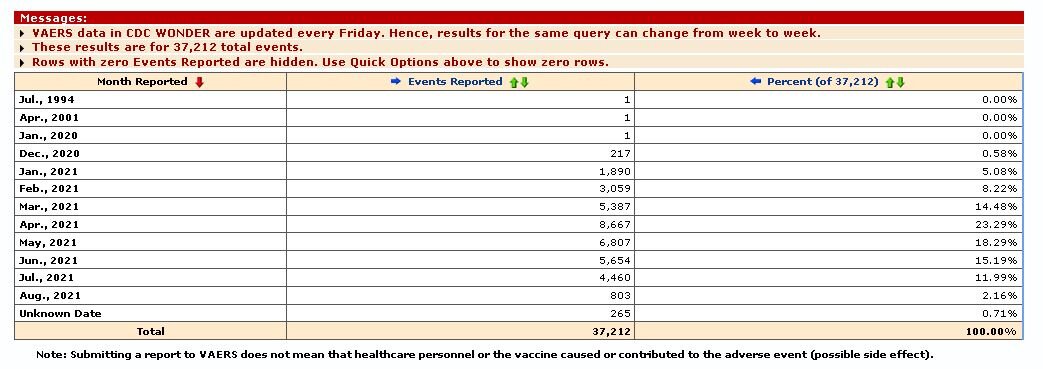Estimating the risk of covid vaccination
These estimates of risk (also called probability) are based on deaths and serious injuries reported to the Vaccine Adverse Event Reporting System (VAERS); the number of vaccines administered; and the percent of vaccine injuries reported to VAERS.
Remember—estimates of risk are theoretical constructs—they aren’t predictions of the future.
To learn how these risks are calculated, see this paper .
~
Here, the Centers for Disease Control (CDC) calculated risk from the number of covid shots administered and deaths reported to VAERS:
The CDC’s numbers are used below on the left to calculate risk two different ways. On the right, both serious injuries and deaths are included in the risk calculations (1).
But, only a small fraction of vaccine injuries are reported to VAERS—possibly less than 1% (2). Therefore, the calculations above seriously underestimate risk. As the percent of vaccine injuries reported to VAERS decreases, the estimated number of actual vaccine injuries increases, along with risk.
For example, if only 10% of vaccine injuries were reported, there were 10 times more actual injuries than there were VAERS reports; if only 1% of vaccine injuries were reported, there were 100 actual injuries for every 1 reported. Meanwhile, the number of vaccines administered stays the same, because it doesn’t depend on who reported to VAERS and who didn’t.
Here are a few examples of how the percent of vaccine injuries reported to VAERS dramatically affects the probabilities:
The following two charts show a range of risk estimates, depending on the percent of vaccine injuries reported to VAERS. The decision about which estimate to choose is up to the reader’s discretion.
These charts don’t make any allowances for coincidental deaths and injuries that may have been reported to VAERS. To adjust for coincidence, choose a higher percentage, which will estimate less risk. This isn’t science—it’s more like a thought experiment.
Remember that all these risks are per dose of vaccine. That means the risk of each dose is added together to estimate total risk.
For example, if you think 5% of adverse events were reported, the estimated risk of serious injury or death per dose is 1 in 480. If you take two covid shots, the risk is 2 in 480 (1 in 240). If you take a third covid shot, the risk is 3 in 480 (1 in 160); and so on.
To learn how these risks are calculated, see this paper .
~
Creative Commons License: Everything in this paper is my original work, and may be shared without alteration for educational purposes, with attribution to virginiastoner.com.
~
NOTES:
(1) VAERS search: Serious injuries reported from COVID19 vaccines:
(2) Most vaccine injuries are not reported to VAERS:
“…VAERS receives reports for only a small fraction of actual adverse events. … more serious and unexpected medical events are probably more likely to be reported than minor ones…” https://vaers.hhs.gov/data/dataguide.html
“…fewer than 1% of vaccine adverse events are reported. Low reporting rates preclude or slow the identification of “problem” drugs and vaccines that endanger public health.…” -- Electronic Support for Public Health–Vaccine Adverse Event Reporting System (ESP:VAERS) , Lazarus, Ross, MBBS, MPH, MMed, GDCompSci & Michael Klompas, MD, MPH, Harvard Pilgrim Health Care, Inc., Inclusive dates: 12/01/07 - 09/30/10. https://digital.ahrq.gov/sites/default/files/docs/publication/r18hs017045-lazarus-final-report-2011.pdf
***







